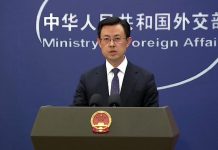As changes in temperature and precipitation as part of global climate change threaten agricultural productivity and the capacity to feed the world’s population, policy makers are urged to rethink action plans to remedy the situation.
Global warming is projected to have significant impacts on conditions affecting agriculture, which include temperature, carbon dioxide, glacial run-off and precipitation. The overall effect of climate change on agriculture generally depends on the balance of these effects. With weather as a key factor in agricultural productivity, extreme weather patterns such as flooding or drought can wreak havoc on low-lying Southeast Asia which has been dubbed the “rice bowl” of the world.
According to researchers, severe flooding and drought throughout the region could reduce agricultural yields by up to 50% in the next three decades. In 2010, Thailand experienced $450 million in crop damage due to a severe drought. The following year, flooding decimated rice crops, causing $40 billion in damage throughout the country’s economy.
Despite Thailand being one of the world’s top rice exporters and employing 40 percent of total workforce in its agriculture sector, agricultural and fishery output currently contributes less than 10 per cent of the GDP. Analysts have predicted that this trend is likely to continue.
Thailand’s eleventh National Economic and Social Development Plan for 2012-2016 highlights agricultural sector as a key source of income and a base for value-added activities. Plans to supports farmers’ rights to own land and to increase value for agricultural commodities are set to be adopted in a bid to boost the flagging sector and to preserve world food security.
Despite drawing up policies in theory, the government has been taken to task by critics that it has not sped up plans to implement these measures quickly enough to keep up with a rapidly warming world.
Agriculture experts have made known that new techniques should be applied to existing farming systems which are highly sensitive to volatile climate. In order to have higher yields, more carbon in the soil and greater resilience to droughts and heat, farmers need to convert to climate-smart agriculture. The new type of agriculture includes increasing the organic content of the soil, promoting soil carbon capture and opting for risk insurance to cover losses when extreme weather strikes.
As the global population grows, incomes in poor countries rise in accordance with demand for food, placing pressure on sustainable food production. Without long-term sustainable solutions to overcome threats to agriculture, the changing climate will bring harm to human life and threaten overall world food security.




